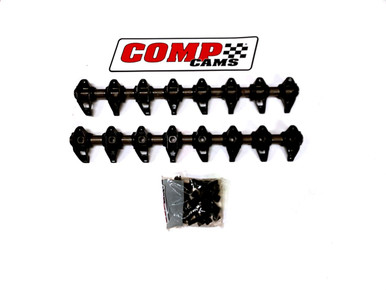I'm not at liberty to discuss the application yet, and the project is still very much in the bench racing phase. I do endurance racing, but this engine won't be for my usual venue.
The goal is an engine that can survive producing 650 HP all day long, and without requiring a rebuild after every event. For reliability we'd like to produce that much power under 6500 rpm. As much as I say "stock bottom end", I'm not opposed to beefier rods and lighter pistons if required, but stroking is out of the question and any boring will be a cleanup bore.
I just read up a bit on the shaft rocker setups, and having run a shaft rocker on my Cadillac, that's the route I'd want to go on this. Valvetrain stability will be the #2 requirement, after bottom end strength.
Definitely FI, and likely an aftermarket ECU. It might be Megasquirt, or we might pop for a Terminator X. It'll depend on funding. There is a chance we might get someone who has the time and experience to play with a factory ECU, but that remains to be seen.
Holley Dominator
Dual widebands if your doing FI
For shaft rockers we use these, And plug the rear of the shaft, Run Pressurized oil thru the shaft to force feed the rocker bushings. Helps keep everything cool during substained high rpm runs. Also run Johnson 2110R lifters and make dang sure your pushrod length is perfect.
(this is for Cathedral heads but they make them for LS3 heads as well)

Comp Cams Max-Lift BSR Shaft Rocker System for LS1/Cathedral Port
Late model performance specialists, offering parts at competitive prices, LS1 LS2 LS3 LS6 LS7 LS9 LSX
 www.tickperformance.com
www.tickperformance.com
So where did the 650hp # come from?
You could do a simple 370ci engine (6.0L iron block bored from 4" to 4.030") with a stock crankshaft, decent rods like Eagle FSI's and a DSS racing piston to match the compression you want from the cylinder head combustion chamber size. I suggest LS3 heads.
Then for your FI, plan out the engine build, then figure out what size turbo (think about the right size compressor with a larger turbine to keep drive pressure down for higher rpms).
Then talk to Martin Smallwood for your cam design to get the power/rpm you want.
Ive put several 370 engines together with a 88-91mm turbos that make 1400hp with ease on E85R fuel.


